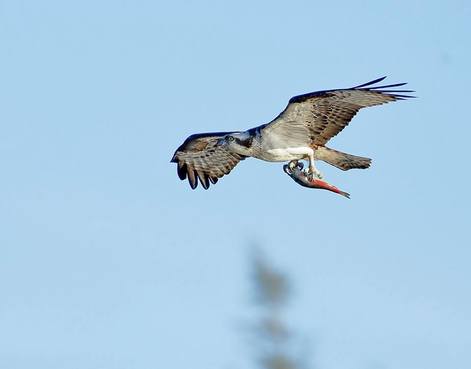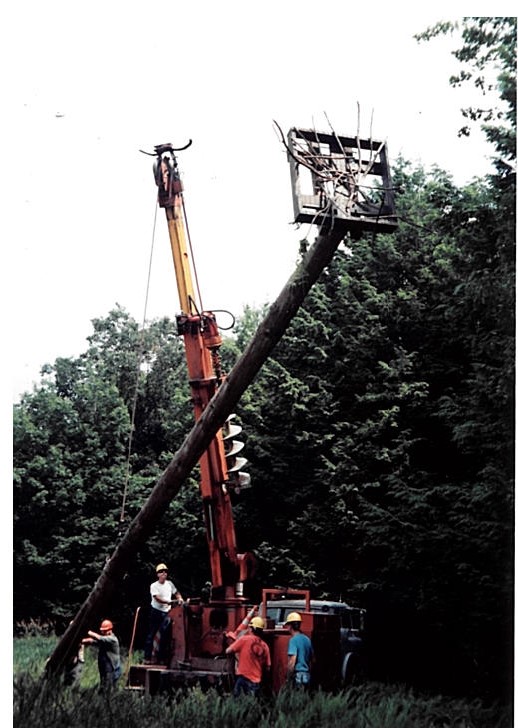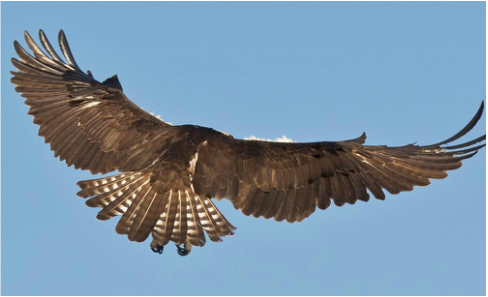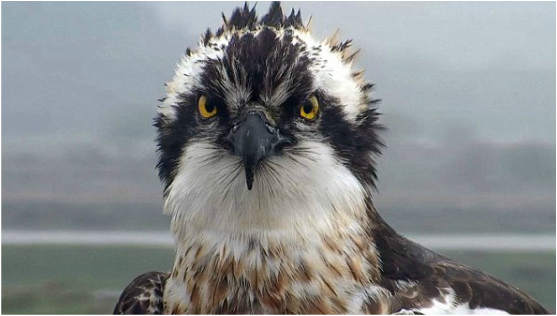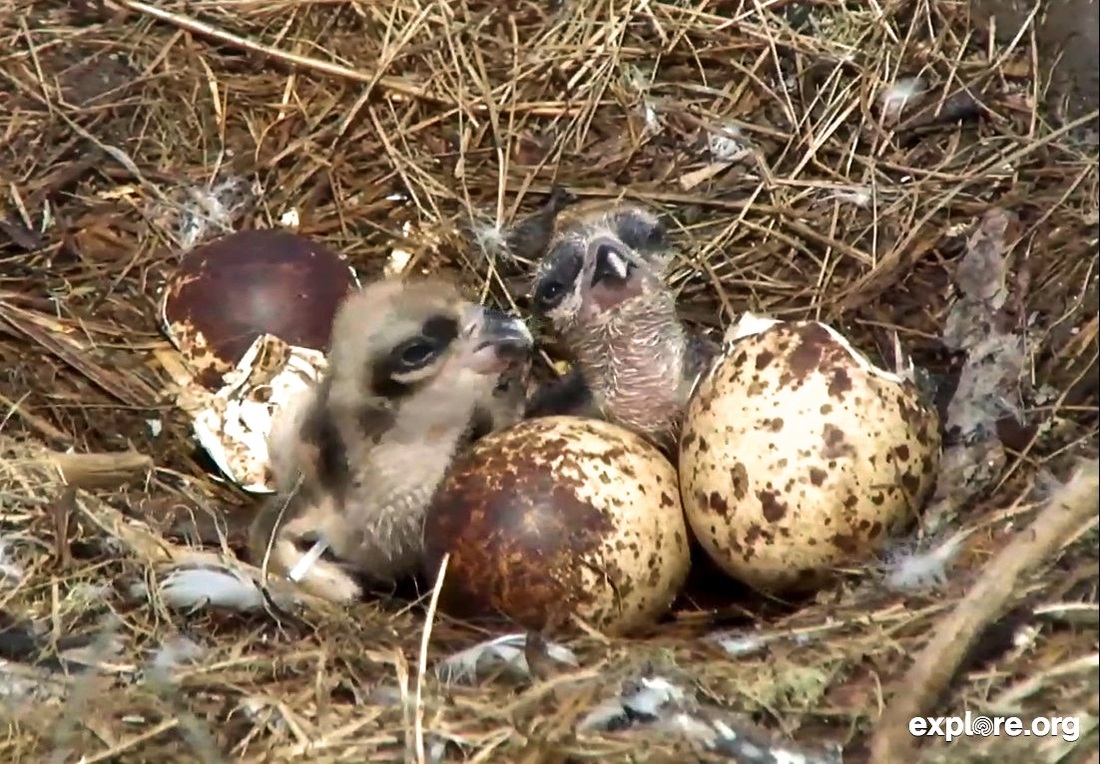|
The osprey was once considered an endangered species in the 1950's and 1960's due to habitat alteration and use of the pesticide DDT (dichlorodiphenyltrichloroethane). Osprey nesting platforms were implemented as a solution to help restore populations in Pennsylvania. The osprey population is thriving today because of this technique and the banning of DDT. It is now considered a species of least concern on the International Union for Conservation of Nature's list of threatened species.
|
This nesting platform was constructed in 1997 by a local Eagle Scout troop. A platform was also erected near the Wallenpaupack dam in Hawley, Pa.
Traits
- Easily identified by its dark brown back and clear white underside.
- Face has a dark colored mask
- Female osprey are identified by a "necklace" marking on the chest
- Males are generally smaller than females
- Distinctive curved wing angle while in flight
Did you know that an osprey's wingspan can reach up to 54-72 inches?
Diet
While walking along Heron Pond you may be lucky enough to watch the ospreys distinctive and fascinating fishing technique
- The osprey will begin hunting by flying 30-100 feet above the waters surface while it scopes out the fish below, possibly hovering over a likely spot.
- When its meal is spotted the osprey will plunge rapidly downward with its wings folded and strike the water breast first.
- One the osprey has captured a fish it will emerge from the water stopping in mid-air to shake off water from its feathers.
- The bird will then fly back to its perch or nest to enjoy its meal.
Fun Fact: The fish is almost always carried face forward to reduce air resistance, and is usually gripped with both feet.
Nesting
- Nesting Period - Late March - early April. Ospreys will mate for life.
- Egg Incubation - 22-32 days. Typical number of eggs laid is 3.
- First Flight - 51-59 days.
- First Nesting - 3-5 years of age
Osprey's can live up to 20 years in the wild!
Location |
|
